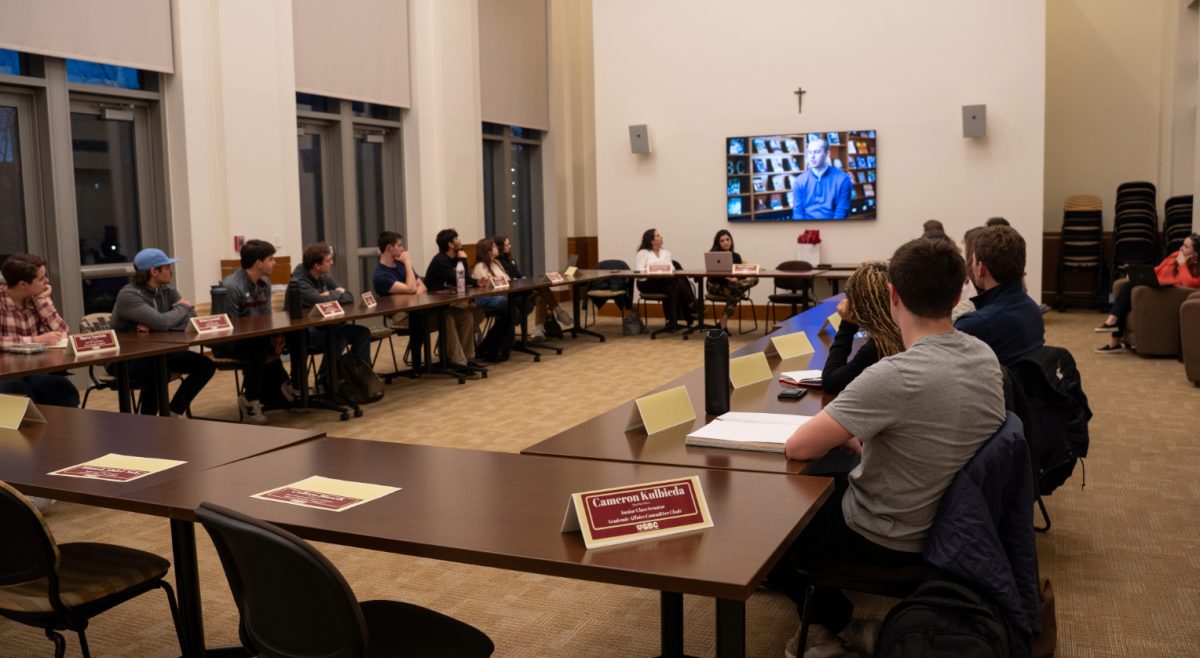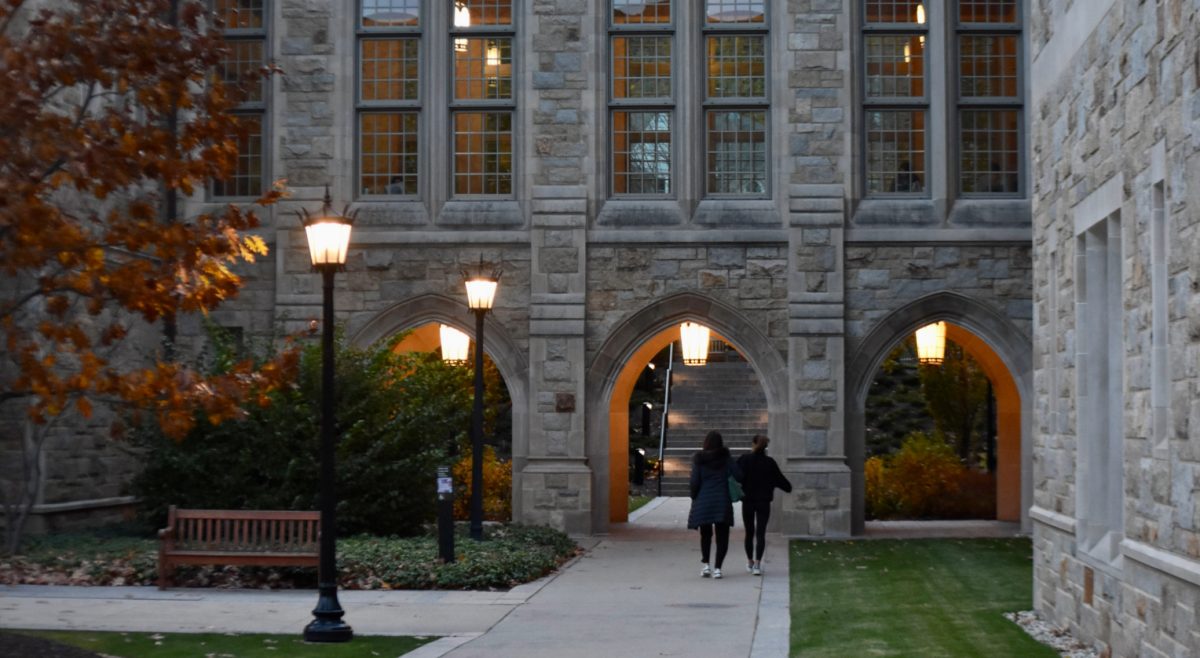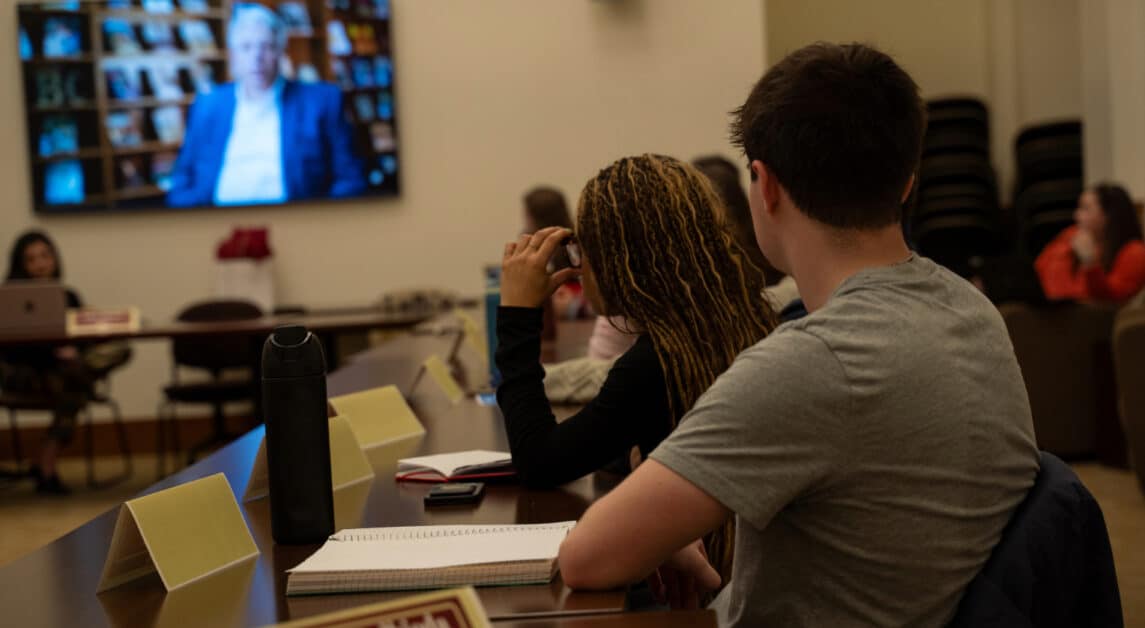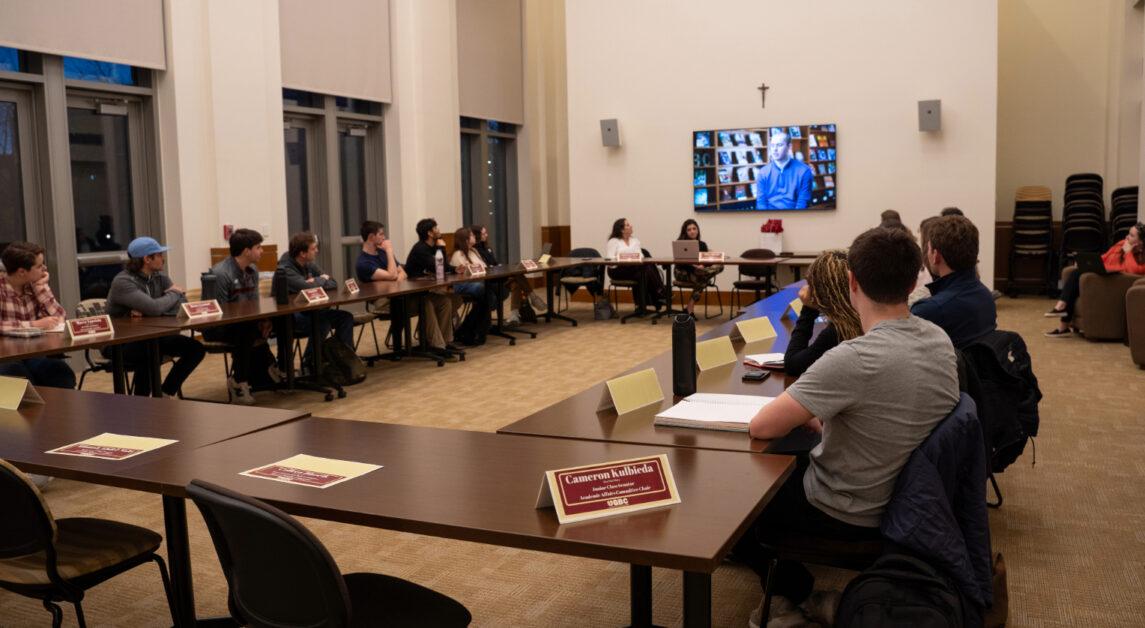Peter Andreas, author of Killer High: A History of War in Six Drugs, visited Boston College on Wednesday to discuss the intersection between warfare and mind-altering substances. A professor of international studies and political science at Brown University, Andreas’ talk marked the latest installment of the International Relations Foreign Policy Lecture Series.
Andreas’ interest in drugs and warfare has spanned the past two decades. He has co-authored various books about drug wars, such as Drug War Politics, Border Games, Blue Helmets and Black Markets, and Smuggling Nation. He said he views his latest work as a way to explore this intersection independently within the context of world history.
“This is the first time that I really take those pieces and then go beyond that and systematically unpack the relationship between psychoactive substances and war, across time, place, and substance,” Andreas said.
The history of warfare, according to Andreas, is incomplete without taking into account the significant role that drugs have played in shaping world history. He said that understanding the intersection between drugs and warfare will lead to a better understanding of the two topics individually. This work is especially important with the rise of narco-states and the narrative that has accompanied their assent.
“I push hard against what I consider a severe case of historical amnesia and a very narrow way of looking at the relationship between war and drugs,” Andreas said, “In fact, in the overall historical scheme of things, we pay far too little attention to perfectly legal drugs. We pay very little attention or insufficient attention to beyond the last few decades, so I go back centuries.”
Most of the recent research surrounding drugs and war concerns drugs being sold to fund militant groups, such as Taliban or FARC, Andreas said. There is very little research about drugs and war on a global scale that spans centuries, rather than just decades.
“The big picture story, connecting the dots, is still mostly missing,” Andreas said. “So that’s what I try to do in this book … provide that bigger picture, that bigger global history.”
Through his own research, Andreas has come to the conclusion that the conventional narrative surrounding the relationship between drugs and war should be re-examined, he said. The relationship between the two has more to do with state-strengthening, rather than state-weakening.
“The first narco-state was arguably in Great Britain,” Andreas said. “Imperial France, imperial China, imperial Russia … the drugs war relationship is principally connected to their rise and expansion.”
In Killer High: A History of War in Six Drugs, Andreas focuses on six psychoactive drugs that he said he believes to be the most important substances in the history of warfare. He argues that these substances—alcohol, nicotine, caffeine, opium, amphetamines, and cocaine—were mass-produced and globalized by warfare.
Psychedelic mushrooms, marijuana, and LSD were not included, as Andreas said he believes those drugs to be too regional.
“They are niche drugs. These are not mass-produced, mass-consumed, globalized commodities in the same way that these other drugs are,” Andreas said.
He divided his study into five subcategories: war on drugs, war through drugs, war for drugs, war against drugs, and drugs after war. Andreas used the American Revolution as a case study to show how these five subcategories apply to a single military event.
“It’s a war that nicely captures all five dimensions of the drug-war relationship,” Andreas said. “Most wars don’t actually capture all five, but this one does.”
Andreas said that the American Revolution came about in part due to Americans’ smuggling of molasses from the French West Indies and Great Britain’s attempt to stop the traffickers. During the war, the United States government was able to secure a loan with France using tobacco as collateral. George Washington also kept his troops energized by supplying large amounts of tobacco. And after the war’s conclusion, Americans changed their drink of choice from British rum to American whiskey in an effort to be more patriotic.
“This was a rum-drinking country, and in the late colonial period, we switched to whiskey. Why? After the American Revolution, rum was associated with a British drink, to rely on imports,” Andreas said. “It’s unpatriotic to continue to drink rum.”













